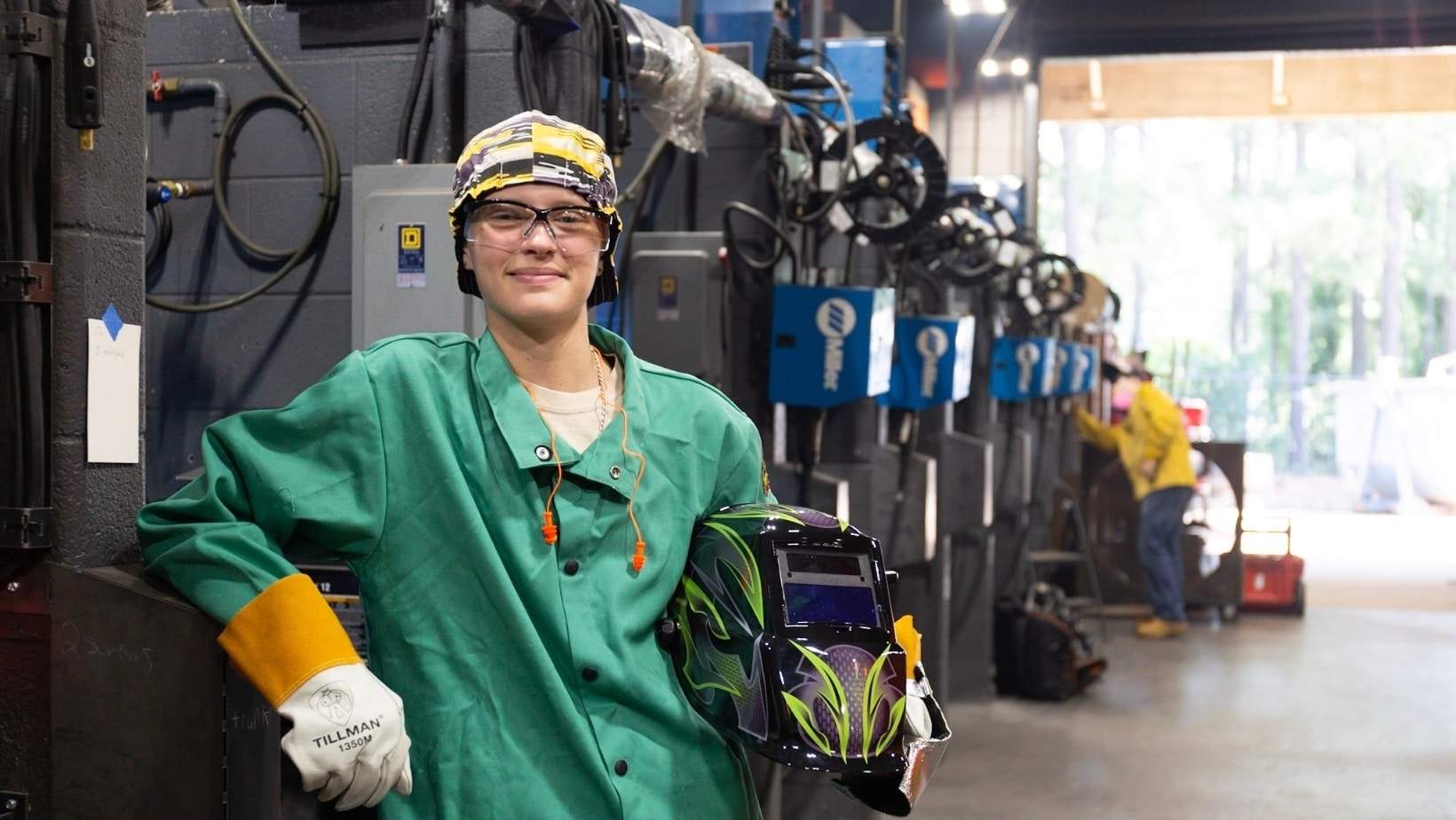Two-year institutions in Hawaii, like community colleges in most states, are often less expensive to attend than four-year universities.
Hawaii takes part in initiatives and collaborations such as the State Authorization and Reciprocity Agreement (SARA) and the Western Interstate Commission for Higher Education (WICHE) to provide discounted online and in-person tuition to students.
Each year, the Hawaii Promise Program delivers over $2.5 million in free tuition to students.
In 2019, over ten million visitors visited Hawaii. Many more came to the Aloha State to pursue higher education.
Across the state’s islands, the University of Hawaii Community Colleges has seven campuses and various educational institutes. Hawaii is also home to some of the best online institutions in the country.
Hawaii’s community colleges are relatively affordable, and the state’s distinctive cultural and geographical offerings make it an excellent destination to study.
Table of contents
- Why Should I Study In Hawaii?
- What Is Hawaii Employment Outlook?
- Five In-Demand Hawaii Jobs
- What Are The Popular Career Paths in Hawaii?
- What Are Some Of The Best Colleges In Hawaii?
- 1. Leeward Community College
- 2. Kapiolani Community College
- 3. Kaua’i Community College
- 4. Hawaii Community College
- 5. Honolulu Community College
- 6. Windward Community College
- 7. Brigham Young University-Hawaii
- 8. University of Phoenix-Hawaii
- 9. Chaminade University of Honolulu
- 10. Hawaii Pacific University
- Frequently Asked Questions (FAQs)
- Conclusion
- References
- We Also Recommend
Why Should I Study In Hawaii?
Here are a few reasons why you should study in Hawaii:
1. Educational Opportunities
A part of the University of Hawaii System oversees the state’s major community colleges. Across the islands of Hawaii, there are more than a half-dozen community institutions, all of which offer distance and in-person instruction.
The college system is proud of its ability to produce well-trained job seekers who are ready to enter the workforce and contribute to the local economy.
Despite its status as an island state, Hawaii maintains several educational relationships with mainland organizations and institutions, and those in the South Pacific.
Don’t Fail to Read These 10 Best Colleges in Chicago | 2022
2. Economy
Hawaii’s economy is heavily reliant on tourism, which is why the COVID-19 outbreak was so devastating.
Tourism employs a major section of the state’s workforce, including retail employees, hotel managers, and tour guides.
With one out of every four workers belonging to a union, Hawaii is the most unionized state in the United States. Many of these employees engage in trades like construction and dock work.
You Can Also Check Out 10 Best Colleges in Pittsburgh | 2022
3. Cost of Living
The cost of living in Hawaii is quite expensive. The cost-of-living index for the state is 185, about double the national average of 100.
Hawaii’s housing costs are nearly three times higher than the national average. The state’s natural beauty draws numerous visitors and retirees, raising living prices.
Because the state is an island, many resources, including food, must be imported, making day-to-day expenses more expensive.
4. Cultural and Community Offerings
Hawaii has a long and rich history, as well as a diversified culture. Outdoor activities such as snorkeling, hiking, fishing, and surfing are available for visitors to the Aloha State.
Students, locals, and visitors alike can visit volcanoes on the islands.
There are also opportunities to learn about Hawaiian culture and native ceremonies. Museums, theaters, and other art attractions can be found throughout the state.
Read Also: 10 Best Colleges in Mississippi
5. Climate
Summer and winter are the only “true” seasons in Hawaii, which have a tropical climate. The summer season runs from May to October, while winter runs from November to April.
During the summer, the average temperature is 85 degrees during the day and 78 degrees at night.
Rainforests, alpine regions, and beaches are among the micro-environments found on the islands.
The mountains and the northeastern edge of the islands receive the most rainfall. The most prevalent weather is breezy and sunny.
Check Our Full Review on University of Miami Tuition: Scholarships, Acceptance Rate & Cost of Living
What Is Hawaii Employment Outlook?
Many sectors in Hawaii are ballooning. The most in-demand industries include government, lodging and food services, healthcare and social support, retail commerce, and construction. Students can pursue these emerging subjects at one of Hawaii’s seven community colleges.
While the cost of living in Hawaii is higher than in most other states, earnings in the state reflect the island state’s higher-than-average living costs.
You Should Also Read Through 10 Best Colleges in Florida 2022
Five In-Demand Hawaii Jobs
1. Restaurant Worker
Hawaii’s annual average salary is $40,790 (as of May 2020).
Job prospects in the United States (2020-2030): 17%
Hawaii has the second-largest food preparation and service business in the United States. The major employers in the industry are full-service restaurants.
Servers, bartenders, cooks, and hostesses are examples of restaurant employees. An associate degree in an area linked to travel or tourism might help a person get started in this field.
See how to make your study easy with Florida Atlantic University Scholarships 2022 | USA
2. Nursing Assistants
Hawaii’s annual average salary is $38,650 (as of May 2020).
Job prospects in the United States (2020-2030): 8%
With the COVID-19 epidemic, demand for healthcare personnel has risen across the country, and Hawaii is no exception.
Home health aides and assisted living personnel are in short supply in Hawaii. Patients are fed, bathed, and given medication by these personnel, who also make sure they go to their medical appointments.
3. Retail Worker
Hawaii’s annual average salary is $35,280 (as of May 2020).
Job prospects in the United States (2020-2030): -1 percent
Given the state’s thriving tourism economy, Hawaii is always in need of retail personnel. Customers are helped to find things and pay for them by retail salespeople.
Cashier, salesperson, and stocker are examples of jobs. Retail employees with associate degrees may advance to managerial positions.
4. Landscaping Worker
Hawaii’s annual average salary is $39,250 (as of May 2020).
Job prospects in the United States (2020-2030): 8%
Despite the natural beauty of Hawaii, landscaping is required around resorts, hotels, and neighborhoods.
Landscapers mow lawns, trim trees, and execute other horticultural activities regularly.
Professionals with associate degrees from Hawaii’s community colleges may move to positions such as landscaping supervisor, which pay up to $20,000 more per year.
5. Construction Worker
Hawaii’s annual average salary is $62,690 (as of May 2020).
Job prospects in the United States (2020-2030): 7%
Construction workers might work for huge corporations or as independent contractors. These experts can work on small-scale, private projects like home renovations.
They may also work for the state or city government on public infrastructure projects, including road construction, bridge construction, and public building construction.
What Are The Popular Career Paths in Hawaii?
Some of the popular career paths in Hawaii are:
- Physical Therapy
- Software Engineering
- Nursing
- Marketing
- Dental
- Teaching
- Civil Engineering
- Health Services
- Finance
What Are Some Of The Best Colleges In Hawaii?
Here’s a list of some of the best colleges in Hawaii:
1. Leeward Community College
Leeward Community College, which is part of the University of Hawaii System, offers 20 different degrees, including liberal arts, automotive technology, and culinary arts.
In most fields, you can get an associate’s degree and a certificate. Part-time certificate programs offer students part-time paths that can be completed in as little as two years.
On-campus associate degree students can also graduate in two years if they work full-time.
Leeward Community College offers an online liberal arts AA degree that transfers to the University of Hawaii at Manoa.
The college also offers more than a half-dozen online certificates in topics like business fundamentals, teaching, and travel industry management.
This Hawaii community college offers online programs through sped up five-week sessions. In contrast to on-campus associate programs, the online AA takes 2.5 years to complete.
They accept students with a GED certificate at Leeward CC, as are all community colleges in this ranking. Each year, the University of Hawaii System grants several scholarships to deserving students.
2. Kapiolani Community College
KCC serves roughly 7,000 students on campus and online from its location in eastern Honolulu.
Many of the college’s academic offerings are related to the state’s most important industries, such as tourism, education, and nursing.
The university also offers nine non-credit certificate programs in subjects like massage therapy, phlebotomy, and surgical technology, besides associate degrees.
Each semester, students can choose from over 200 online courses. Learners at this Hawaii community college who are pursuing a degree wholly online or in a hybrid format benefit from online tutoring, testing, and technology tools.
Alumni can get resume critiques and practice interviewing skills at the college’s Employment Prep Center. Finally, Honolulu high school students can take advantage of the college’s dual-credit program.
Hawaii residents and active-duty military members are free from paying an entry fee if they apply for the autumn or spring semester. Incoming degree seekers take the COMPASS placement examinations to decide which English and math courses they will take first. Students may also be eligible for one of four institutional scholarships.
3. Kaua’i Community College
Kaua’i Community College offers 18 different programs that equip students for a range of jobs, including medical assistants, nurses, and beekeepers. This Hawaii community college also has a strong connection to the local community.
Every month, for example, the school hosts at least two public events, including lectures and speakers.
Degree seekers who live in rural Hawaii, want to earn a degree in a hybrid format, or have other responsibilities such as a full-time job or a family may find distance learning at Kaua’i CC appealing.
Learners who plan to transfer to a bachelor’s completion program can take any online course offered by the University of Hawaii System through Kaua’i CC.
Veterans’ Support Center advisors work one-on-one with veterans to ensure that relevant military training can be applied toward certificate or degree requirements.
Kaua’i Community College, like all public universities in Hawaii, offers Native Hawaiians special scholarship and grant possibilities. In addition, Hawaii citizens aged 60 and up are exempt from paying tuition.
4. Hawaii Community College
With campuses in Hilo and Kailua Kona, Hawai’i CC has a particular partnership with the University of Hawai’i at Hilo, allowing community college students to use the bigger four-year university’s academic, library, and career services.
Agriculture, business technology, and tropical forest ecosystem and agroforestry management are among the college’s 28 programs of study.
Certificates of competence and achievement are available to students. They accept students with some work experience into certificate programs.
Although Hawai’i CC does not offer online programs, degree-seekers can still enroll in online courses through the Hawai’i Community College System. Online tutoring, proctoring, and IT services are available to distance education students.
In-state students save around 66 percent on tuition compared to out-of-state students at all Hawaii community institutions. Students who take classes during the summer term pay a higher tuition cost.
5. Honolulu Community College
Degree and certificate seekers can choose from over two dozen programs of study at Honolulu CC.
Hawaiian studies, natural sciences, Asian studies, communication, and psychology are among the college’s five liberal arts associate programs that transfer to four-year public schools in Hawaii.
Honolulu Community College offers cheap online programs for in-state students at a fraction of the cost of four-year public universities.
Before enrolling in an online course, all prospective students must complete a readiness exam. This Hawaii community college offers five-week periods for its courses.
In the fall, spring, and summer semesters, Honolulu CC accepts new students. Incoming degree applicants can satisfy Honolulu CC’s placement testing requirements by submitting standardized test scores.
6. Windward Community College
Windward Community College is a rural campus which focuses on the creative arts, Hawaiian culture studies, and environmental sciences.
It’s at the base of the Ko’olau Mountains. The student-to-faculty ratio is only 18:1, with a 100% acceptance rate and roughly 2,700 students.
This shows which professors are attentive to student feedback and are well-versed in their respective disciplines.
In-state tuition is approximately $3,194, while out-of-state tuition is approximately $8,330.
- $10,637 is the average net price.
- Percentage of people who stay: 55%
- % of students who graduate: 20%
- After Attendance, Salary: $27,488
Windward Community College, like all other University of Hawaii community college affiliates, is accredited by the Accrediting Commission for Community and Junior Colleges.
Through Hawaiian music studies, sustainable agriculture, and associate-level veterinary assisting programs, the institution aims to preserve indigenous Hawaiian culture.
Orchid culture, Polynesian surf culture, and the Hawaii Fishpond Lab are just a few examples of courses that are expressly created to depict Hawaiian customs and values. In the Windward community, the Aloha spirit is ever-present.
7. Brigham Young University-Hawaii
BYU-Hawaii, which is affiliated with The Church of Jesus Christ of Latter-day Saints, attempts to merge spiritual and secular parts of education in order to encourage lifelong learning.
The Oahu campus has a total enrollment of slightly under 3,000 students and is situated halfway between the mountains and the shore, both of which are within walking distance.
BYU-H is the ideal place to find purpose and direction, with a varied student population representing over 70 nations. Both Church and non-Church membership donations supports tuition and expenses, bringing the cost of a three-semester academic year for Church members to roughly $5,720.
- $12,793 is the average net price.
- They keep 63 percent of employees.
- 63 percent of students graduate.
- After-College Salary: $38,600
All students are required to take part actively in their learning and to reflect on their experiences frequently.
Arts and Humanities, Math and Science, and Professional Certification are some of the most common majors. Minors and professional certifications are available at BYU-Hawaii, and various typical undergraduate degree programs coexist with distinctive major tracks, including Hawaiian language studies.
They encourage students to tailor their degree programs and become “holokai,” which means “seafarer” in Hawaiian, a fitting description for any BYU-Hawaii student on their path to success.
8. University of Phoenix-Hawaii
The University of Phoenix-Hawaii is a for-profit university in Honolulu that is directly affiliated with the University of Phoenix.
Bachelor’s degrees in business, education, computer technology, and healthcare, as well as master’s degrees in education, business, and nursing, are available.
The doctoral programs at the university address the same topics. Tuition is approximately $9,552, and the community is incredibly close knit, with only 313 undergraduate students.
Faculty and teachers are all dedicated to tailoring instruction to meet the unique needs of each student.
- $13,118 is the average net price.
- 45 percent retention rate
- 45 percent of students graduate.
- After Attendance, Salary: $88,250
Working students with many demands on their time, for whom a regular college timetable is impracticable, will benefit from UP-program.
Hawaii’s most students are above the age of 25 and are trying to either improve their employability or change careers.
The Higher Learning Commission has certified UP-Hawaii since 1978 for its more personalized, participatory administration methods.
9. Chaminade University of Honolulu
The Chaminade University of Honolulu was founded in 1955 as a private Catholic college affiliated with the Marianist tradition and is accredited by the Western Association of Schools and Colleges.
Students live only around the corner from Waikiki Beach and have easy access to both Diamond Head and the Pacific Ocean thanks to the school’s location in the Kaimuki Honolulu area.
It has a student-to-teacher ratio of only 11:1, with an average enrollment of roughly 2,100 kids.
Tuition is just under $27,000, although most students get financial help and scholarships, in keeping with the school’s belief that financial hardship should not prevent students from learning.
- $23,119 is the average net price.
- 78 percent retention rate
- % of students who graduate: 38%
- After Attendance, Salary: $62,373
Through service-oriented learning, Chaminade aims to promote Marianist values of peace, justice, and dignity for all.
Bachelor’s degrees are available in fields such as accounting, forensic science, and religious studies, and nine graduate degrees, including Education, Criminal Justice, and Pastoral Studies, are available.
Finally, Chaminade is an excellent place to begin your journey toward a life of service and accomplishment.
10. Hawaii Pacific University
Hawaii Pacific University is a private, urban university founded in 1965 in Honolulu’s downtown district.
It now offers over 30 undergraduate degrees in subjects such as math, physics, the arts, and humanities, among others.
There are six graduate degrees available, including the Master of Education, MBA, and Master of Social Work.
Students can also enroll in the school’s single doctoral-level nursing program. Students can pick between undergraduate, graduate, and associate-level degrees in a variety of subjects thanks to the school’s extensive online course offerings.
- $27,139 is the average net price.
- They keep 62 percent of students.
- 35% of students graduate.
- After-College Salary: $64,990
HPU emphasizes a diverse curriculum that reflects the student population because it is primarily a liberal arts college.
The average student population at the school is little under 5,000, allowing for a more individualized college experience. In-state students pay an average of $27,500 per year in tuition and fees.
Frequently Asked Questions (FAQs)
Hawaii’s community colleges all charge the same tuition. Out-of-state students pay $345 per credit, while in-state students pay $131. Students may, however, be required to pay for accommodation and board, transportation, books, and other essential expenses.
The Hawai’i Promise Scholarship program provides free in-state tuition for qualified University of Hawai’i Community College students with financial needs.
Hawaii Community College is a public institution in Hilo, Hawaii. It has a total enrollment of 2,632.
Conclusion
Hawaii, no doubt has some of the best community colleges and having a review on some of the best community colleges in Hawaii, it becomes therefore easier to pick which one of them best fits your chosen line of career.
References
- https://www.bestcolleges.com/features/best-community-colleges-in-hawaii/
- https://www.edsmart.org/best-colleges-hawaii/
We Also Recommend
- 10 Best Colleges in Chicago | 2022
- 10 Best Colleges in Mississippi
- Top 10 Colleges In Maryland
- 10 Best Colleges in Florida 2022
- 10 Best Colleges in San Antonio
- Top 21 Scholarships for College Students in California 2022 [UPDATED]
- 10 Best Colleges in Louisiana | 2022
- 10 Best Colleges In Michigan 2022
- 13 Best Engineering Colleges in Canada
- 10 Best Colleges in South Carolina | 2022
- 10 Best Colleges in Oxnard | 2022
- Top 10 Colleges In Maryland





